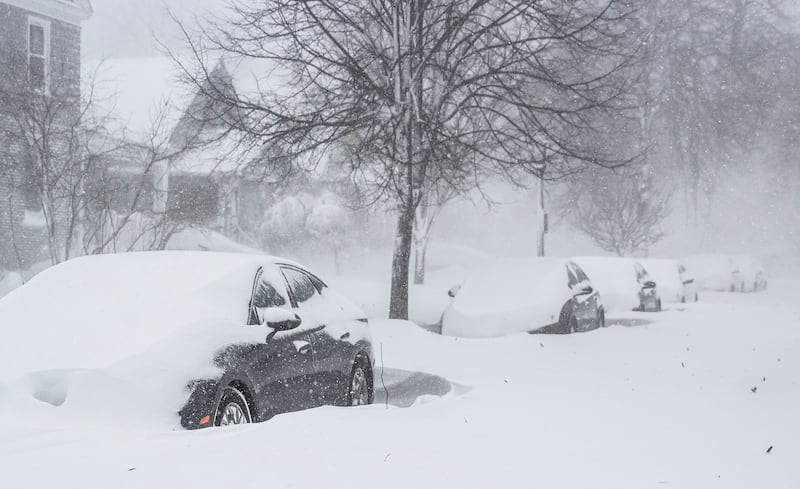An arctic blast that gripped much of the United States on Saturday left more than 700,000 without power, at least 16 dead from weather-related car crashes and thousands stranded due to flight cancellations.
Plummeting temperatures were expected to bring the coldest Christmas Eve on record, and energy systems across the country were strained by rising demand for heat and storm-related damage to transmission lines.
The latest outage numbers are a sharp drop from the 1.8 million US homes and businesses left without power as of early Saturday morning, according to tracking site Poweroutage.us. Many electric companies continued to ask customers to conserve energy by not running large appliances and turning off unneeded lights.
Disruptions upended daily routines and holiday plans for millions of Americans during one of the year's busiest travel periods.
More than 2,700 US flights were cancelled on Saturday, with total delays tallying more than 6,400, according to flight-tracking service FlightAware. More than 5,000 flights were cancelled on Friday, FlightAware said.
The American Automobile Association had estimated that 112.7 million people would venture 80km or more from home between December 23rd and January 2nd. But stormy weather heading into the weekend likely ended up keeping many people at home. Weather-related traffic incidents across the country left at least 16 dead and hundreds stranded on ice and snowbound roads, according to media reports.

In Erie County, in upstate New York, about 500 motorists were stranded in their vehicles on Friday night into Saturday morning, with the National Guard called in to help with rescues, Erie County Executive Mark Poloncarz told media. At least one person was found dead in a car, he said. ”There’s no place for anyone to go, everything’s closed, so just stay home,” he told MSNBC.
Two motorists were killed, and numerous others injured, in a 50-vehicle pileup that shut down the Ohio Turnpike in both directions during a blizzard near Toledo, forcing an evacuation of stranded motorists by bus to keep them from freezing, officials said.
Three deaths were reported in Kentucky, where Governor Andy Beshear, on Saturday, warned residents, "Stay home, stay safe, stay alive."
"I know it's really hard because it's Christmas Eve. But we're having dozens and dozens of accidents," he said in an online briefing. "It's simply not safe."
Blizzard conditions remained on Saturday for Buffalo, New York, and its surrounding county on the edge of Lake Erie in far western New York. The city imposed a driving ban on Friday that remained in effect on Saturday, and all three Buffalo-area border-crossing bridges were closed to inbound traffic from Canada.
Temperatures were forecast to top out on Saturday at minus 13 degrees in Pittsburgh, surpassing the city’s previous all-time coldest Christmas Eve high. Cities in Georgia and South Carolina - Athens and Charleston - were expected to record their coldest daytime Christmas Eve high temperatures.
The flurry of temperature records was predicted as a deep freeze sharpened by perilous wind chills enveloped much of the eastern two-thirds of the country.
"The cold snap will persist through Christmas," said meteorologist Ashton Robinson Cook, at the NWS Weather Prediction Center.
The severe weather prompted authorities across the country to open warming centres in libraries and police stations while scrambling to expand temporary shelter for the homeless. The challenge was compounded by an influx of migrants crossing the US southern border by the thousands in recent weeks.
The National Weather Service said its map of existing or impending meteorological hazards “depicts one of the greatest extents of winter weather warnings and advisories ever”.
(c) Copyright Thomson Reuters 2022










